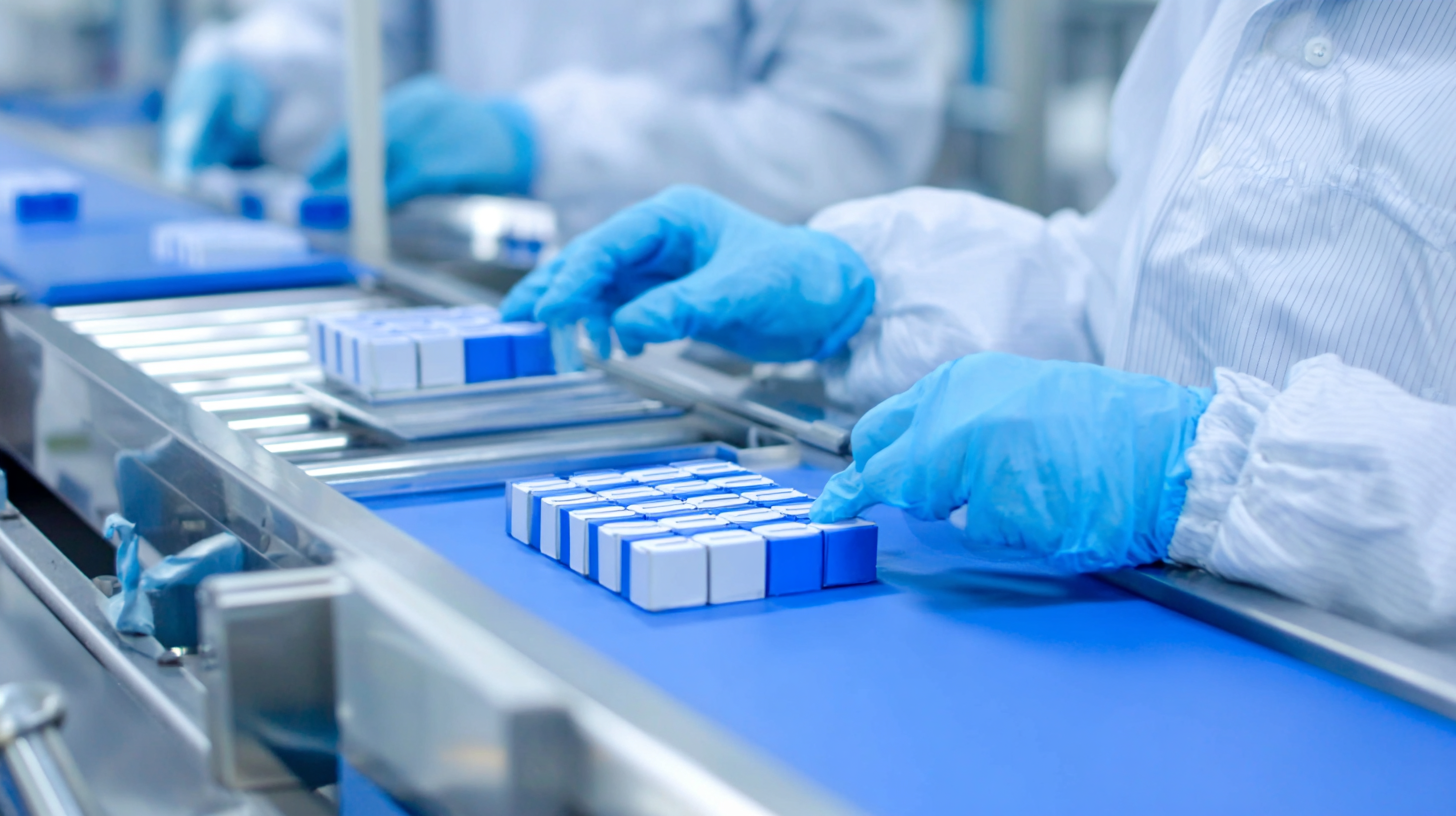- Home
- Products
- Services
- Product concept development
- Engineering
- Design for manufacturability
- Regulatory services
Read more - Material selection and formulation
- Prototyping
- Testing and validation
Read more - Production process development
- Custom tooling
- Manufacturing
- Finishing operations
- Assembly
- Packaging
- Private labeling
- Sterilization
Read more
- Resources
- Careers
- Search
Understanding Import Export Certifications for the Best Eto Sterilization Process in the Medical Industry
In the medical industry, ensuring the safety and efficacy of sterile products is paramount, and ETO sterilization plays a critical role in this process. According to a report by Grand View Research, the global sterilization equipment market is projected to reach USD 13.03 billion by 2025, with ETO sterilization being one of the most widely used methods due to its effectiveness in sterilizing heat-sensitive medical devices. As regulatory requirements become increasingly stringent, understanding the various import-export certifications related to ETO sterilization is essential for manufacturers aiming to succeed in this competitive landscape. This blog will guide you through the certifications needed, outlining best practices to ensure compliance and optimize the ETO sterilization process, ultimately helping you navigate the complexities of international trade in the medical sector.

The Importance of Import Export Certifications in the Medical Sector
 Import export certifications play a crucial role in the medical sector, particularly when it comes to ensuring the safety and effectiveness of sterilization processes. Ethylene oxide (Eto) sterilization, known for its ability to disinfect heat-sensitive medical equipment, must adhere to strict regulatory standards. These certifications establish a framework that ensures compliance with international health regulations and facilitates market access for medical devices across borders.
Import export certifications play a crucial role in the medical sector, particularly when it comes to ensuring the safety and effectiveness of sterilization processes. Ethylene oxide (Eto) sterilization, known for its ability to disinfect heat-sensitive medical equipment, must adhere to strict regulatory standards. These certifications establish a framework that ensures compliance with international health regulations and facilitates market access for medical devices across borders.
Furthermore, import export certifications provide vital assurances to healthcare facilities and patients alike. They signify that medical products have undergone rigorous testing and meet specific safety requirements, ultimately fostering trust in the healthcare supply chain. Without these certifications, products may face delays at customs, quality concerns, or even complete rejection, leading to potential risks and financial losses. Therefore, stakeholders in the medical industry should prioritize obtaining the necessary certifications to safeguard public health and enhance their operational efficiency.
Eto Sterilization: Understanding the Process and Its Benefits
Ethylene oxide (EtO) sterilization is a critical process in the medical industry, renowned for its ability to effectively sterilize heat-sensitive medical devices and equipment. According to a report from the World Health Organization (WHO), over 50% of medical devices used in hospitals require sterilization due to the risk of infection. The EtO process is particularly beneficial as it can eliminate a broad spectrum of microorganisms, including bacteria, viruses, and fungi, without compromising the integrity of delicate materials.
When considering EtO sterilization, it’s essential to understand the advantages it offers. The process operates at low temperatures, making it ideal for items that cannot endure steam sterilization. Additionally, studies show that EtO sterilization achieves a 6-log reduction in microbial populations, which significantly exceeds the minimum effectiveness required for sterilization (usually a 3-log reduction). This high efficacy is vital for ensuring patient safety and compliance with industry standards.
**Tips for Successful EtO Sterilization:**
1. Ensure proper packaging of items to be sterilized; using gas-permeable materials can enhance the efficiency of the process.
2. Regularly validate and calibrate the sterilization equipment to maintain optimal performance and reliability.
3. Monitor environmental conditions, as humidity and temperature can impact sterilization efficacy—aim for a humidity level of around 40-60% to achieve best results.

Key Certifications for Ensuring Quality in Medical Device Sterilization
When it comes to the medical industry, ensuring that devices are accordingly sterilized is paramount. Key certifications such as ISO 13485 and ISO 14971 play a vital role in maintaining high standards in sterilization processes, particularly for Ethylene Oxide (Eto) sterilization. ISO 13485 focuses on the quality management systems for medical devices, while ISO 14971 emphasizes risk management, ensuring that every step from production to sterilization is carefully evaluated for safety and efficacy.
**Tips:** When selecting a sterilization provider, verify their certifications and ensure compliance with these international standards. This not only guarantees the safety and effectiveness of medical devices but also assures healthcare professionals and patients of their reliability.
Furthermore, certifications like the FDA’s 510(k) and CE marking signify that a sterilized product has met the essential regulatory requirements in various markets. These approvals are crucial for market entry and patient trust in medical devices.
**Tips:** Keep abreast of any updates in certification requirements as regulations can evolve, impacting the sterilization processes and certificates recognized in the medical field. Choosing a sterilization partner who is not only certified but also knowledgeable about these changes can significantly benefit your organization's compliance efforts.
Understanding Import Export Certifications for the Best Eto Sterilization Process in the Medical Industry - Key Certifications for Ensuring Quality in Medical Device Sterilization
| Certification | Issuing Authority | Purpose | Importance |
|---|---|---|---|
| ISO 11135 | International Organization for Standardization | Validate EtO sterilization process | Ensures international quality standards |
| FDA 510(k) | U.S. Food and Drug Administration | Pre-market submission demonstrating device safety | Critical for market approval in the U.S. |
| CE Marking | European Union | Compliance with EU safety standards | Mandatory for market entry in the EU |
| ISO 13485 | International Organization for Standardization | Quality management systems in medical devices | Enhances quality assurance |
| AAMI/ISO 11135 | Association for the Advancement of Medical Instrumentation | Guidelines for EtO sterilization | Focuses on safety and effectiveness |
How Compliance with Standards Enhances Patient Safety with Eto Sterilization
Ethylene oxide (Eto) sterilization plays a crucial role in ensuring the safety and effectiveness of medical devices. Compliance with established industry standards is essential for healthcare facilities to maintain high levels of patient safety. The implementation of appropriate certifications not only assures that sterilization practices meet regulatory requirements but also greatly reduces the risk of contamination and ensures the integrity of medical products. Certification processes often involve rigorous testing and validation methods, which are crucial in confirming that the Eto sterilization process is effective and safe for various medical contexts.
Moreover, adhering to import and export certifications related to Eto sterilization helps facilities maintain global compliance, especially when dealing with international suppliers and manufacturers. This compliance directly affects patient safety by ensuring that all products meet the necessary sterilization benchmarks. As healthcare continues to advance, the importance of following these standards cannot be overstated; they protect patients by ensuring that every step taken in the sterilization process is thorough and scientifically validated. This establishes a foundation of trust between healthcare providers and patients, ultimately enhancing the safety and efficacy of medical treatments.
Understanding Import Export Certifications for ETO Sterilization in the Medical Industry
This bar chart illustrates the number of compliance certificates related to different standards pertinent to ETO sterilization processes in the medical industry. Enhanced compliance with these standards significantly contributes to patient safety by ensuring effective sterilization practices.
Navigating the Regulatory Landscape for Importing Medical Products
Navigating the regulatory landscape for importing medical products is becoming increasingly complex, particularly in the context of the evolving roles of domestic agents and responsible parties. In recent developments within the medical product import sector, domestic agents are now recognized as pivotal players, tasked with ensuring compliance with regulatory standards. Their obligations are clearly outlined by legislation, which emphasizes accountability in the distribution of both medical devices and pharmaceuticals. For instance, the Guangdong Province has reported significant advancements in innovative regulatory practices, marking a new era of governance in the Guangdong-Hong Kong-Macau Greater Bay Area.
Moreover, recent initiatives, such as the Shenzhen Municipal Government's action plan for promoting high-quality development of goods trade from 2023 to 2025, highlight a strategic focus on enhancing the import process for medical products. Regulatory measures have been introduced to facilitate efficient monitoring and management of medical devices, reflecting a broader commitment to safeguarding public health. The emphasis on localized compliance, including initiatives for implementing Chinese labeling for imported medical devices in Shanghai, exemplifies the proactive approach adopted by authorities to streamline regulatory adherence. As the industry gears up for these transformations, stakeholders must stay informed and prepared to adapt to these changes in the regulatory landscape.






